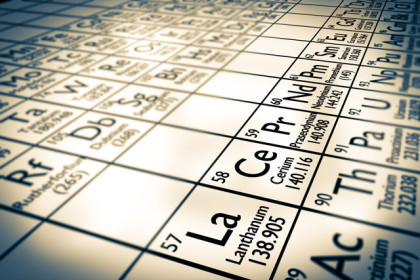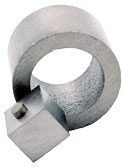 Choosing the right magnetic material for a given application is a critical part of magnet selection. Occasionally, we will receive an inquiry specifying the need for a “rare earth magnet,” without the inquirer realizing that this is a general term that can refer to either samarium cobalt or neodymium magnets. Our goal with this article is to help our existing and potential customers better understand the use, history, and application of rare earth magnets, including why one specific rare earth alloy may be specified over another.
Choosing the right magnetic material for a given application is a critical part of magnet selection. Occasionally, we will receive an inquiry specifying the need for a “rare earth magnet,” without the inquirer realizing that this is a general term that can refer to either samarium cobalt or neodymium magnets. Our goal with this article is to help our existing and potential customers better understand the use, history, and application of rare earth magnets, including why one specific rare earth alloy may be specified over another.
What are rare earth elements?
 There are seventeen rare earth elements. Fifteen of these elements are lanthanides, which refers to the metallic elements with atomic numbers between 57 and 71. The other two elements are transition metals — yttrium and scandium — which are found with lanthanides and are chemically similar. Rare earth elements are commonly categorized as either “light” (lanthanum through samarium) or “heavy” (europium through lutetium). This light or heavy categorization refers to their atomic weights.
There are seventeen rare earth elements. Fifteen of these elements are lanthanides, which refers to the metallic elements with atomic numbers between 57 and 71. The other two elements are transition metals — yttrium and scandium — which are found with lanthanides and are chemically similar. Rare earth elements are commonly categorized as either “light” (lanthanum through samarium) or “heavy” (europium through lutetium). This light or heavy categorization refers to their atomic weights.
Rare earth elements are typically found together in the same mineral deposits, and the deposits are quite plentiful. With the exception of promethium, none of the rare earth elements are especially “rare.”
What are samarium cobalt (SmCo) and neodymium (Nd) magnets?
Samarium (Sm) and neodymium (Nd) are the two most common rare earth elements utilized in magnetic applications. They are light rare earth elements (LREE) in the cerium earths group.
 Samarium cobalt and neodymium alloy magnets provide some of the highest force-to-weight ratios, making them especially useful for industrial and commercial applications. However, samarium cobalt magnets and neodymium rare earth magnets are neither prohibitively expensive nor in short supply. Because of this, their designation as “rare earth” magnets should not be a primary reason to either select or discount these magnets from industrial or commercial applications.
Samarium cobalt and neodymium alloy magnets provide some of the highest force-to-weight ratios, making them especially useful for industrial and commercial applications. However, samarium cobalt magnets and neodymium rare earth magnets are neither prohibitively expensive nor in short supply. Because of this, their designation as “rare earth” magnets should not be a primary reason to either select or discount these magnets from industrial or commercial applications.
The designation of magnets as “rare earth” also allows for a general categorization of both SmCo magnets and Neo magnets together when mentioned alongside traditional alnico magnets or ferrite magnets. Potential utilization of either of these magnets should be calculated according to intended usages and application variables like heat tolerances.
How did rare earth elements get their name?
Rare earth elements were given their “rare” moniker for two disparate, yet significant reasons. The first naming derivation is due to the initial perceived scarcity of all seventeen rare earth elements. The second stems from the difficult extraction process of separating each rare earth element from its mineral ore.
Currently, China meets approximately 95% of total global demand for rare earths —mining and refining around 100,000 metric tons of rare earths a year. The United States, Afghanistan, Australia, and Japan also have significant rare earth reserves.
The second explanation for rare earth elements being designated “rare” was due to difficulty in both the mining and refining processes, which were typically performed utilizing crystallization methods. The term rare can be historically synonymous with “difficult.” Because mining and refining have been throughout history arduous processes, some experts suggest the term “rare earth” was applied to these seventeen elements as a result.
What are rare earth magnets used for?
Rare earth magnets are utilized across an incredibly diverse range of industries and applications. They’re useful in medical applications such as magnetic resonance imaging (MRI) machines, as well as X-Rays and positron emission tomography (PET) imaging. You’ll find rare earth magnets utilized in aviation, national defense, electronic devices, smartphones, consumer goods, jewelry, hard drives, and electric vehicles (EVs), to name several applications.
Dura provides expert advice on rare earth magnets
If your project or application requires rare earth magnets — or you’re unsure — contact one of Dura’s magnet specialists. We’ll help you determine if rare earth magnets are the best choice for your application.

